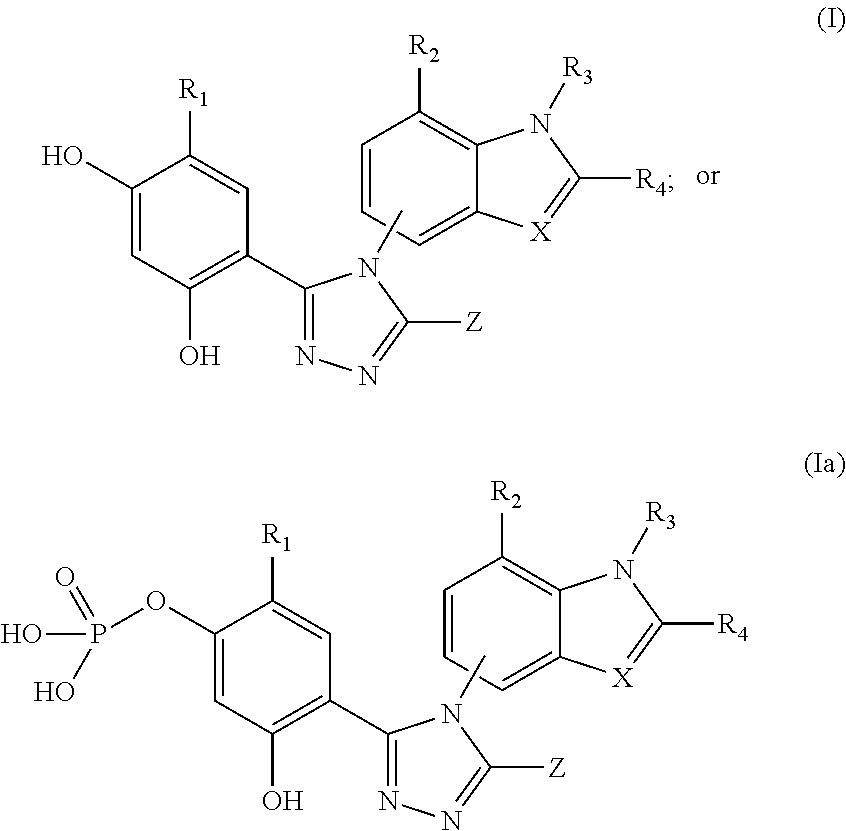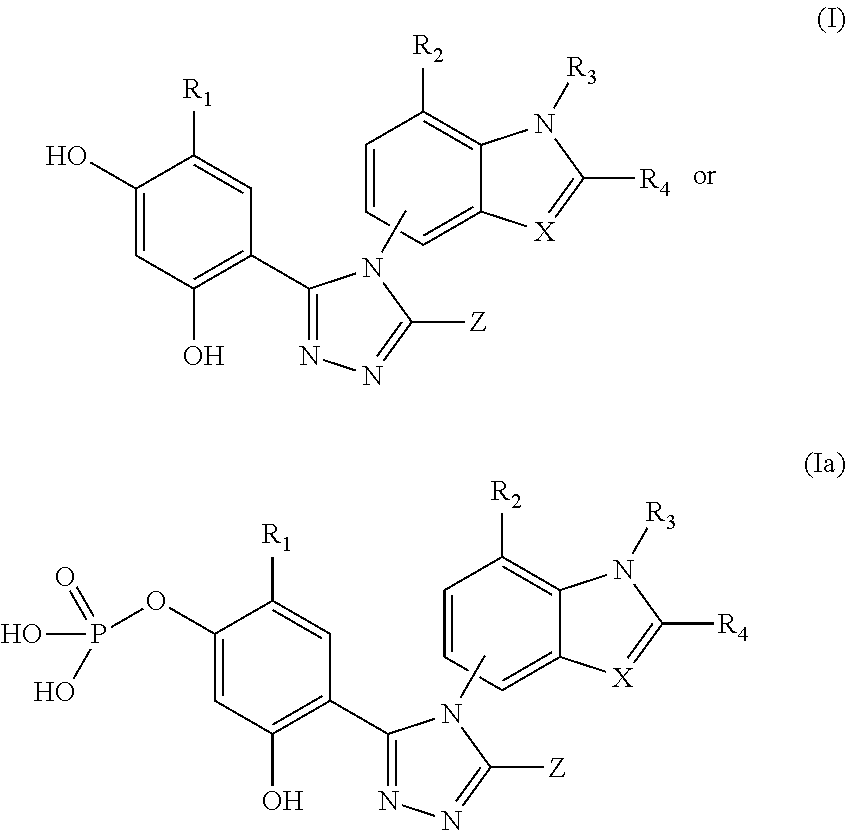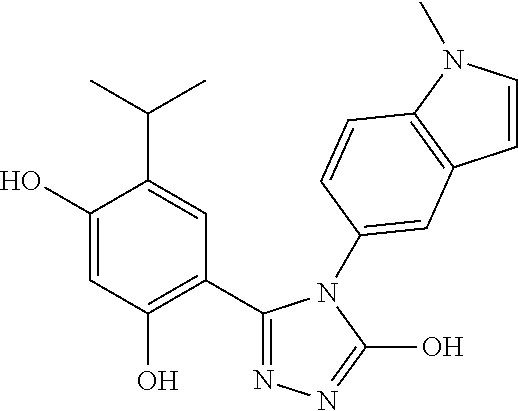HSP90 Inhibitors for Treating Non-Small Cell Lung Cancer in Wild-Type EGFR and/or KRAS Patients
a non-small cell lung cancer and inhibitor technology, applied in the direction of biocide, heterocyclic compound active ingredients, drug compositions, etc., can solve the problems of unsatisfactory current chemotherapy, less likely that a therapeutic agent that acts on one molecular target will be fully effective, and dismal prognosis for the majority of patients diagnosed with cancer
- Summary
- Abstract
- Description
- Claims
- Application Information
AI Technical Summary
Benefits of technology
Problems solved by technology
Method used
Image
Examples
example 1
Synthesis of HSP90 Inhibitory Compounds
[0176]The triazolone Hsp90 inhibitory compounds used in the disclosed pharmaceutical compositions and methods herein can be prepared according to the procedures disclosed in U.S. Patent Publication No. 2006 / 0167070, and WO2009 / 023211.
example 2
Compound 48 Displays Anti-tumor Activity Against Human Tumor Cells in a Nude Mouse Xenograft Model
[0177]The human squamous non-small cell lung cancer cell line, RERF-LC-AI (RCB0444; S. Kyoizumi, et al., Cancer. Res. 45:3274-3281, 1985), was obtained from the Riken Cell Bank (Tsukuba, Ibaraki, Japan). The cell line was cultured in growth media prepared from 50% Dulbecco's Modified Eagle Medium (high glucose), 50% RPMI Media 1640, 10% fetal bovine serum (FBS), 1% 100×L-glutamine, 1% 100× penicillin-streptomycin, 1% 100× sodium pyruvate and 1% 100×MEM non-essential amino acids. FBS was obtained from American Type Culture Collection (Manassas, Va., USA) and all other reagents were obtained from Invitrogen Corp. (Carlsbad, Calif., USA). Approximately 4-5×10(6) cells that had been cryopreserved in liquid nitrogen were rapidly thawed at 37° C. and transferred to a 175 cm2 tissue culture flask containing 50 ml of growth media and then incubated at 37° C. in a 5% CO2 incubator.
[0178]The grow...
example 3
A Non-Randomized, Open-label, Multi-Center, Multi-Cohort Phase 2 Study Evaluating the Efficacy and Safety of Compound 1 in Subjects with Stage IIIB or IV Non-Small Cell Lung Cancer
[0183]Patients with non-small cell lung cancer were enrolled in a Phase 2 clinical trial to evaluate the efficacy and safety of Compound 1. Various genotypic biomarkers were monitored for each patients, such as EGFR mutation, K-Ras mutation, and expression levels for EGFR and K-ras. Patients were divided into 4 cohorts, based on their EGFR and KRAS types. Cohort A included patients with EGFR mutations, who had received failed prior treatment with an approved EGFR TKi (erlotinib or gefitinib). Cohort B included patients with wild-type EGFR and K-ras mutations, who had received prior chemotherapy with at least 1 platinum doublet. Cohort C included patients with wild-type EGFR and wild-type K-ras, who had received prior chemotherapy with at least 1 platinum doublet. Cohort D includes patients with wild-type E...
PUM
| Property | Measurement | Unit |
|---|---|---|
| temperature | aaaaa | aaaaa |
| volume | aaaaa | aaaaa |
| volumes | aaaaa | aaaaa |
Abstract
Description
Claims
Application Information
 Login to View More
Login to View More - R&D
- Intellectual Property
- Life Sciences
- Materials
- Tech Scout
- Unparalleled Data Quality
- Higher Quality Content
- 60% Fewer Hallucinations
Browse by: Latest US Patents, China's latest patents, Technical Efficacy Thesaurus, Application Domain, Technology Topic, Popular Technical Reports.
© 2025 PatSnap. All rights reserved.Legal|Privacy policy|Modern Slavery Act Transparency Statement|Sitemap|About US| Contact US: help@patsnap.com



